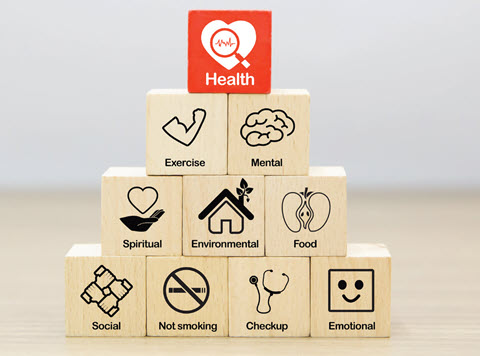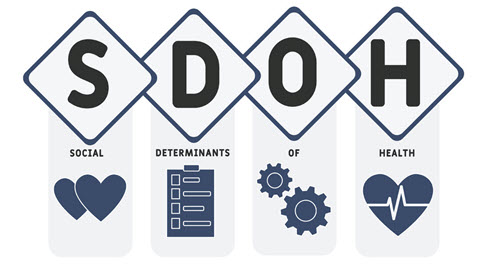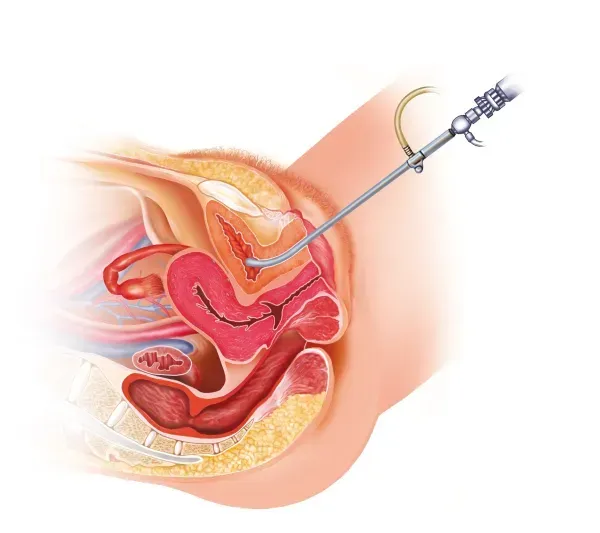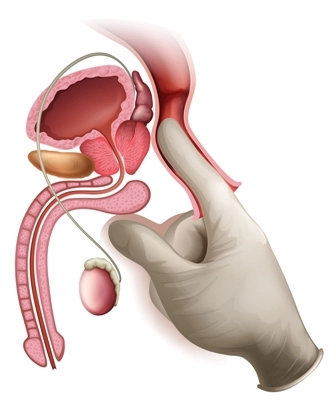Unlock SDoH Coding Success With These 6 FAQs
Look beyond the codes to the guidelines for all the info you need. On October 1, more than 1,700 ICD-10-CM code changes went into effect. Many of those changes allow you to now better report a patient’s social determinants of health (SDoH). Additionally, a new SDoH guideline revision sheds light on the correct way for you to apply the SDoH codes. Review this handy FAQ to ensure you’re using SDoH codes properly, which can also help support your medical decision making levels related to the 2023 evaluation and management (E/M) coding guidelines. What Are SDoH? “Social determinants of health are conditions in the environments in which people are born, live, learn, work, play, worship, and age that affect a wide range of health, functioning, and quality-of-life outcomes and risks,” according to the Office of Disease Prevention and Health Promotion (ODPHP). They include such factors as “availability of resources to meet daily needs (e.g., safe housing and local food markets), access to educational, economic, and job opportunities, exposure to crime, violence, and social disorder (e.g., presence of trash and lack of cooperation in a community), [and] socioeconomic conditions (e.g., concentrated poverty and the stressful conditions that accompany it)” (Source: www.healthypeople.gov/2020/topics-objectives/topic/social-determinants-of-health). Do I Have to Report SDoH? While there may not be any legal mandates for reporting the Z55-Z65 codes, there are some very good reasons for doing so. This is because social determinants influence health in very direct ways, and SDoH codes allow you to paint the full picture of the external influences on a patient’s condition and enable your provider to tailor patient treatment accordingly. More, “when the patient’s SDoH status affects the care of the patient, these status codes can better show the complexity of the patient population you serve,” according to JoAnne M. Wolf, RHIT, CPC, CEMC, coding manager at Children’s Health Network in Minneapolis. In other words, SDoH codes can enable you to form a comprehensive understanding of the social context your practice’s patients find themselves in. How Do I Report SDoH? You’ll find all the codes you need to report SDoH in the Z55-Z65 (Persons with potential health hazards related to socioeconomic and psychosocial circumstances) group of codes. Many of the key codes you might need for reporting SDoH can be found in the following code groups: Expert coding tip: Before using one of the Z55-Z65 codes, be sure you become familiar with the main ICD-10-CM guideline that governs their use. Per I.B.14, codes in categories Z55-Z65 “should only be reported as secondary diagnoses.” Additionally, Z55-Z65 are some of the only codes in ICD-10-CM that you can report “based on medical record documentation from clinicians involved in the care of the patient who are not the patient’s provider.” That’s because “this information represents social information, rather than medical diagnoses,” as the guidelines go on to elaborate. So, you can use documentation “from social workers, community health workers, case managers, or nurses, if their documentation is included in the official medical record,” and “patient self-reported documentation … to assign codes for social determinants of health, as long as the patient self-reported information is signed-off by and incorporated into the medical record by either a clinician or provider,” per ICD-10-CM Official Guidelines. What’s New in SDoH Coding for 2023? The first significant revision of note is the expansion of the Z59.8- (Other problems related to housing and economic circumstances) code set, which will allow you to capture ways in which a patient’s health is affected by their social circumstances in much greater detail. The three new codes and their inclusion terms are: Additionally, Excludes2 notes state you can also code extreme poverty (Z59.5), low income (Z59.6), or material hardship NEC (Z59.87) with Z59.86; and extreme poverty (Z59.5), financial insecurity, not elsewhere classified (Z59.86), and low income (Z59.6) with Z59.87. Have the SDoH Guidelines Changed for 2023? Yes. ICD-10-CM 2023 has expanded guideline I.C.21.c.17 to help you use the codes effectively. The guideline expansion will now help you determine the number and relevance of codes you should use on a patient’s record, telling you to assign SDoH codes “when the documentation specifies that the patient has an associated problem or risk factor.” To clarify, the guideline provides the example that “not every individual living alone would be assigned code Z60.2, Problems related to living alone.” You would only use that code if the patient’s solitary life limited the patient’s ability to take care of themselves. What Else Should I Know About SDoH? The table of medical decision making (MDM) elements for office/outpatient evaluation and management codes 99202-99205/99212-99215 (Office or other outpatient visit for the evaluation and management of a new/established patient, which requires a medically appropriate history and/or examination and straightforward medical decision making …) lists SDoH as an example of a moderate-level risk of complication/morbidity when it significantly limits a patient’s diagnosis or treatment. “As a result of the E/M guideline changes in 2021, SDoH can now be captured in the office visit level. They can potentially increase the level of MDM or increase time spent by the provider in care coordination to connect patients with community services,” says Leah Fuller, CPC, COC, a senior consultant with Pinnacle Enterprise Risk Consulting Services, LLC in Charlotte, North Carolina. Remember, too, that these guidelines will soon apply to other E/M codes in 2023. Consequently, if you use a code from Z55-Z65 in a patient record, you should also view this as an opportunity to review the MDM or time for an encounter with that patient.





